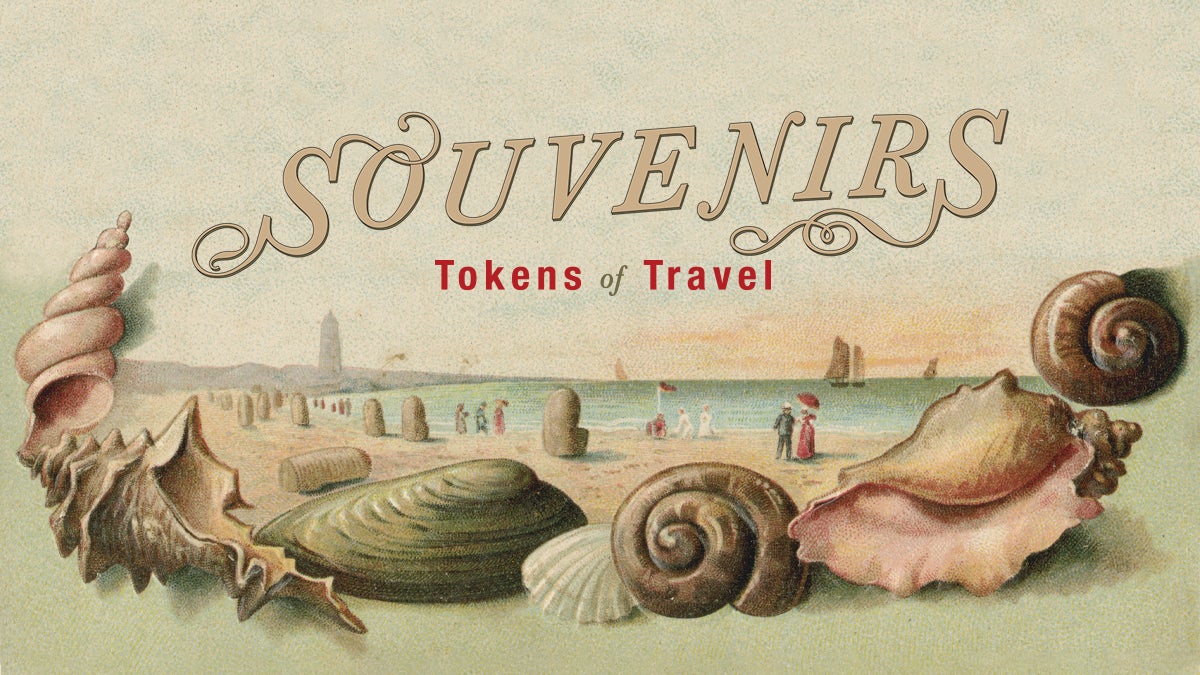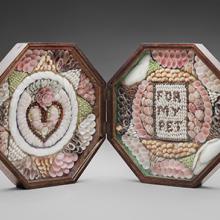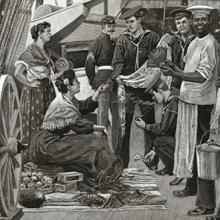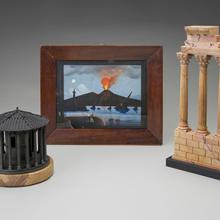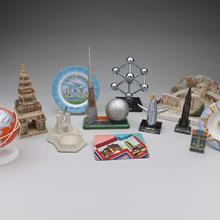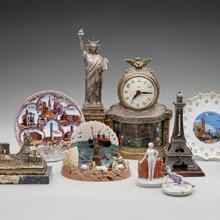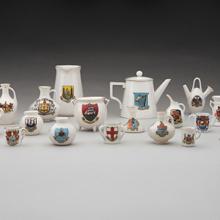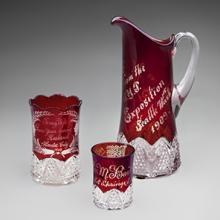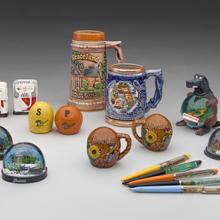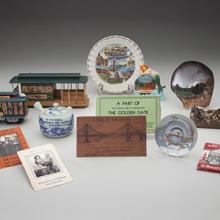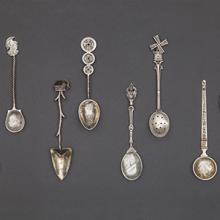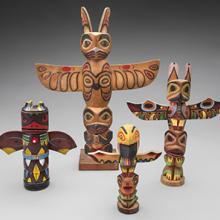Souvenirs: Tokens of Travel
Souvenirs: Tokens of Travel
As long as people have visited distant places, they have collected tokens of their travels—from shells, rocks, or leaves, to postcards and handcrafted or mass-produced souvenirs. Since at least the fourteenth century, peddlers have sold souvenirs at popular sites. Travelers on pilgrimages purchased trinkets and collected found items to keep a record of the journeys they made to holy places.
The earliest vacationers were those wealthy enough to travel for extended periods of time. In the late 1600s to the 1800s, the Grand Tour was the ultimate European excursion. The itinerary, which typically lasted one year or more, included lengthy stops in England, France, and Italy. Travelers returned with a variety of paintings, prints, and miniature monuments to proudly display in their homes. For those who could not afford the extravagant trip, international fairs and expositions brought the world to them. Since the first World’s Fair held in London in 1851, hundreds of millions of people have flocked from all over the world to attend these exciting urban events, which introduced new technologies to the world. Spectators enjoyed acquiring a variety of keepsakes to remember fairs, such as glassware and souvenir spoons.
With the advent of steamships and railroads, travel became more affordable. During the late 1800s, a burgeoning middle class began to take vacations. In the United States, the establishment of national parks and renewed interest in American history following the nation’s Centennial in 1876 further encouraged domestic travel. Tourists traveled to cities, lakes, seaside resorts, mountains, and deserts, where they acquired a host of trinkets from indigenous crafts to ashtrays and matchbooks acquired from hotels. In later decades, the automobile encouraged road trips, and the airplane allowed greater access to remote areas.
From the late 1800s to the 1930s, transfer-printed souvenir ceramics, which displayed an infinite number of destinations, historic sites, and commemorative events, enjoyed a golden age. Small paintings, souvenir picture books, and stereographs also served to remind travelers of their excursions. The picture postcard became popular in the 1890s. This once universal souvenir could be kept as a visual record of one’s trip or mailed home to friends and relatives. After World War II, taking photographs while on vacation became commonplace, and like postcards, have long served as the quintessential souvenir. Additionally, during the postwar period, snow globes, floaty pens, and other mass-produced items became ubiquitous at souvenir stands.
No matter what type of souvenir, these objects allow one to reminisce about their travel experiences long after they have ended. This exhibition highlights a variety of mementos from the nineteenth century to the present. Sailors’ valentines, transfer ware, ruby-stained glass, heraldic china, and even ashtrays, are a few of the many souvenirs on display, some of which viewers may recall collecting during their own excursions.
©2013 by San Francisco Airport Commission. All rights reserved.
